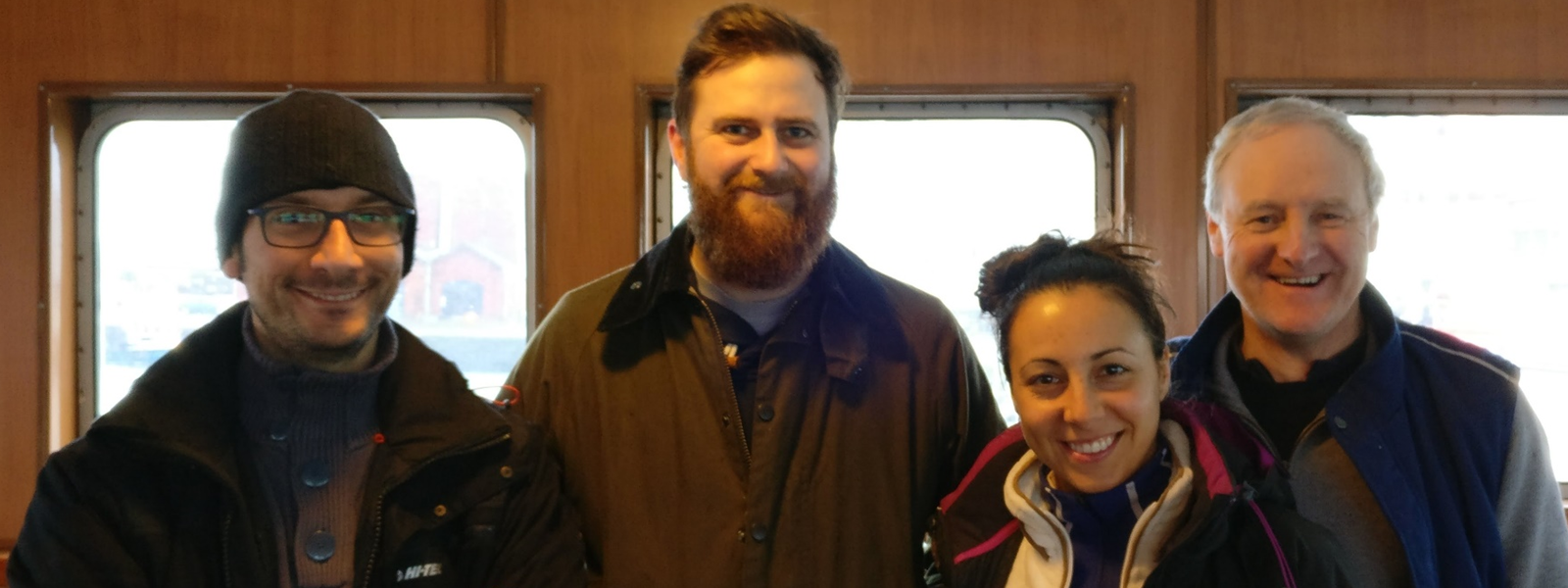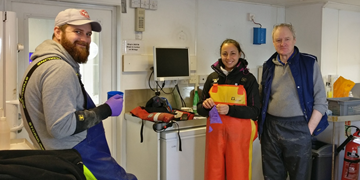Mathematics and Statistics Department modelling the impact of fishing on the Firth of Clyde ecosystem
Professor Mike Heath, from the Mathematics and Statistics Department at the University of Strathclyde, co-supervises a Glasgow University PhD student, Matthew Pace in a project on mathematical modelling the impact of fishing on the Firth of Clyde ecosystem.

Mathematics & StatisticsImpact of fishing on Firth of Clyde ecosystem

Field trip at sea
As part of this project, they were given some periods of sea-time aboard Marine Scotland and Scottish Environmental Protection Agency survey vessels to carry out sampling of the sedimentology and chemistry of the seabed in areas with and without fishing activity. The data is needed for the models they are developing. This was the third of these surveys which aim to gather data on muddy sediments in the inner Clyde. This involved sending a coring device down to the seabed and recovering the cored mud, which is then sliced into thin sections in a lab aboard the ship to measure the vertical profile of properties down the core.
On this occasion, Matt was accompanied on the survey by Melinda Choa, a PhD student in the Maths and Stats Department at Strathclyde. Her project is on modelling populations of viruses and bacteria, however, volunteered to join the survey as an assistant in the research, to get experience of working at sea. This requires training in survival at sea and a medical test before being allowed to work offshore.
The cruise was cut short by a couple of days thanks to the poor weather on Thursday and Friday, but they managed to exceed initial targets of 9 stations by condensing the work into the two and a half days.
The numbers:
- 10 stations across the Outer Firth, Middle Firth and Loch Fyne.
- 1 CTD profile and 6 cores from each station, 3 for pore-water nutrients, 3 for sediment chlorophyll-a and % organic C/N (60 cores total).
- 1 sample dissolved inorganic nutrients from overlying water, 4 samples DIN from sediment porewaters and 4 samples for grain size analysis per core (10 overlying DIN, 120 pore-water DIN, 120 grain size total).
- 1 sample chlorophyll-a in overlying water, 7 samples sediment chlorophyll-a/phaeophytin-a/grain size analysis per core (29 overlying chlorophyll-a, 203 sediment chlorophyll-a/phaeophytin-a/grain size analysis total).
This is just an example of field-work undertaken as part of PhD projects.
We currently have two fully funded, four year PhD scholarships available to UK/EU citizens. Due to start 1st October 2018. Deadline for applications is 15th June 2018. Find out more.